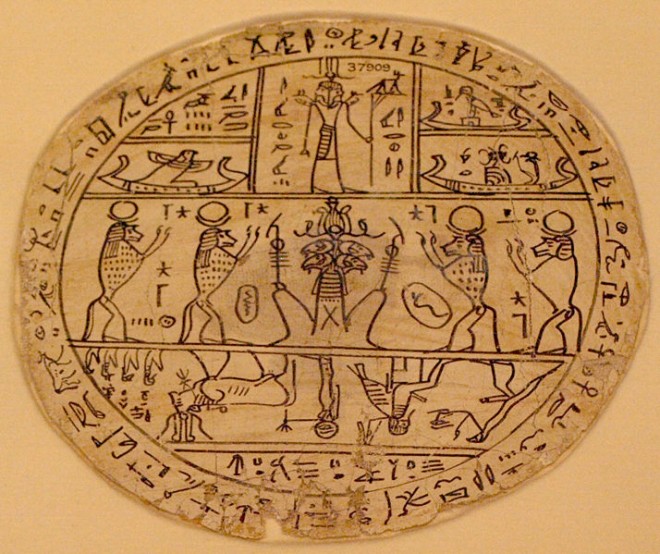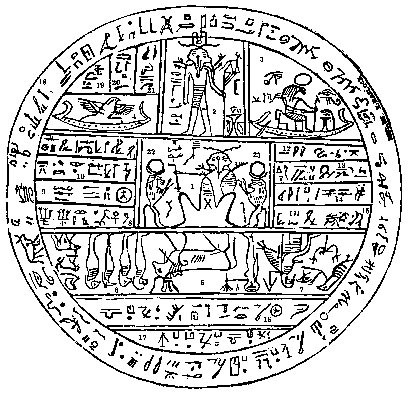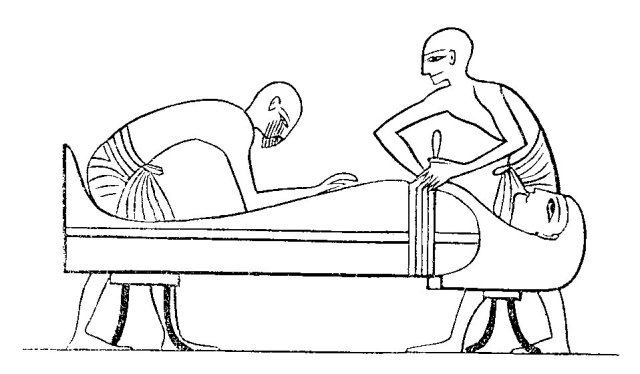Meant to supply “life-giving fire” to the head of the dead, it was a manual for the after-life.
It was an instruction book, a manual of sorts, to guide you back into the presence of God. Kind of like the temple.
It was all about resurrection and life after death. All things that I believe in — things that Abraham taught the Pharaoh. Things that the ancient Egyptians were desperately seeking…
Life Eternal, Life Immortal, Living Forever. Being born again.
The sun was the image of rebirth, setting each day only to rise again in the morning. The top half of the hypocephalus is the symbol of this life–the sun rising in the day, and then it drops into the horizon, and the bottom half, upside down, is the world of the dead. The rising sun is the rebirth of man.
The word is derived from “hypo” meaning below, under and “cephalus”, meaning head. Literally, under your head.
It was made out of papyrus, bronze, gold, wood, or clay.
There are about 100 of these in museums. One in the British Museum looks similar to the Joseph Smith hypocephalus in The Pearl of Great Price. A man brought it and some mummies to Joseph Smith in 1835 at Nauvoo. It was first published in The Times and Seasons in Nauvoo, Illinois, on March 1, 1842. It is called Facsimile 2 in The Book of Abraham. The hypocephalus in this facsimile 2 is the Hypocephalus of Sheshonq. Hugh Nibley studied and wrote about it in his book, One Eternal Round. He gave a seminar on this research; you can find a link to the mp3 here.
Hypocephali (plural for hypocephalus)
“fall into two broad classes. The first class is a prayer to and for a heavenly deliverer, and the second is the answer to that prayer. Facsimile 2 belongs to the second class… [It] “ensures the resurrection and deification of the dead …[and] graphically portrays the whole creation of God in a circular or spherical form.”(p xix, One Eternal Round)
This is the one in the British Museum:
File:HypocephalusWithChapter162FromTheBookOfTheDead-BritishMuseum
I read about this in Hugh Nibley’s, One Eternal Round.
Translation and Historicity of the Book of Abraham (LDS.org) — this is one of the series in the Gospel Topics for more transparency.
The Joseph Smith Hypocephalus, Michael D. Rhodes
Global Egyptian Museum Hypocephalus
Hypocephalus in room 22nof Egyptian Museum




